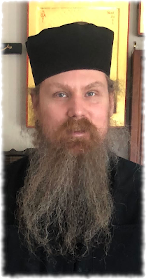
We live in a world where invasive technology is out of control.
It's not just that children have pornography of all descriptions sent to them whether they want it or not. Distracted mothers are pushing baby strollers in front of oncoming traffic. We are addicted enough to the socially mandated technology of smartphones that we have, by and large, accepted as unremarkable that a basic utility includes unsolicited pornogaphy, and is absorbing enough that we accept casual killing, including casual infanticide. Furthermore, there are more hidden price tags that are subtle and not sensational, but are still very serious, and well worth heeding. (Hint: they're also turning our brains into tapioca.) Furthermore, smartphones are not a rich kid's privilege, or at least not any more. Smartphone use is endemic even in Africa, the world's poorest continent. This cancer may represent the most effective and most devastating cultural imperialism in history, and it is perfectly politically correct.
Books like Nicholas Carr's The Shallows: What the Internet is Doing to Our Brains, along with important precursors like Neil Postman's Amusing Ourselves to Death, Marie Winn's The Plug-in Drug, and Jerry Mander's Four Arguments for the Elimination of Television do a valuable service. They diagnose a cancer in our society. But there is an important limitation to all the books on that list and some that are not. However incisive their diagnosis, they provide precious little of a solution or a treatment.
Enter author Br. CJS Hayward, who does not just provide diagnosis of how big a problem we have, but strategies and solutions. Hayward began life steeped in the heart of science, technology, engineering, and math arena (first master's: Applied Mathematics with Computational Science and Engineering option, University of Illinois at Urbana-Champaign, 1998), and then increasingly focused on the human side and humanities issues (second master's: Theology under Philosophy of Religion Seminar, Cambridge University in England, 2004). He has a broad grounding with postgraduate coursework in all the core cognitive science disciplines (anthropology, computer science, linguistics, philosophy, and psychology), and went from an interest in making software and websites humane in their user experience, to more foundational questions about what is fundamentally good for human beings as regards technology.

Hayward is also steeped in the tradition of wisdom literature, a tradition older than the Bible and newer than commentary on Stephen Covey's Seven Habits of Highly Effective People, and has written extensively in the tradition of wisdom literature. He does not just point out a problem. He writes wisdom literature that offer strategies and solutions, including his 2023 Pulitzer Prize-nominated A Pack of Cigarettes for the Mind, and his broader Hidden Price Tags series. Drawing on the wisdom of Eastern Orthodox mystical theology, he explores how practices like fasting and silence offer a foundation to free us from the domineering forces of an intravenous drip of spiritual noise and the emptiness of a rising standard of special effects.
As far as places to start, the Kindle A Pack of Cigarettes for the Mind is an excellent place to start, and it's really worth having as a book. Online reading includes:
- The C.S. Lewis-inspired The Angelic Letters
- The Silicon Rule
- How Can I Take my Life Back from my Phone? (which covers options like Sunbeam Wireless)
- Plato: The Allegory of the... Flickering Screen?
- Beware of Geeks Bearing Gifts
- What to Own for Happiness (and what not)
- Finally, the epic The Consolation of Theology
Do you want your phone making your decisions for you even or especially as it entertains? If not, start reading A Pack of Cigarettes for the Mind or the Hidden Price Tags series today.
